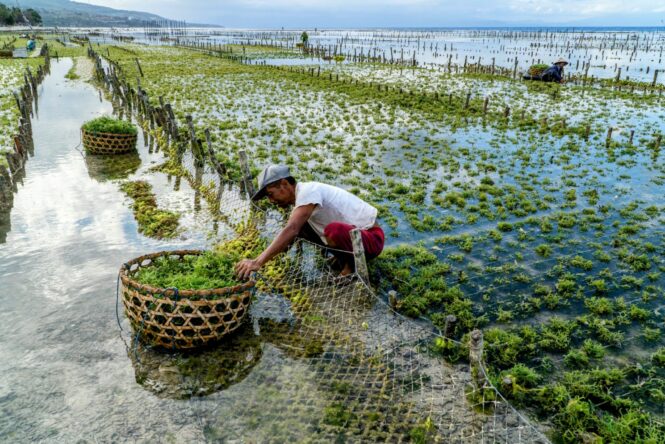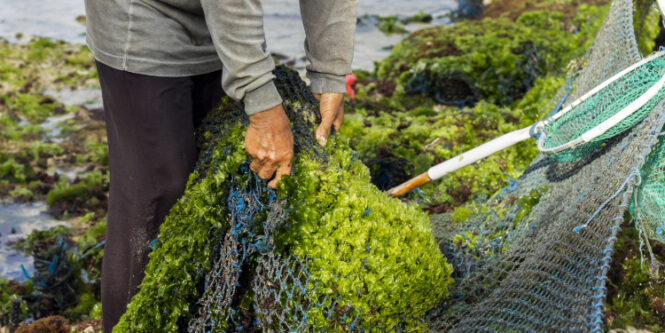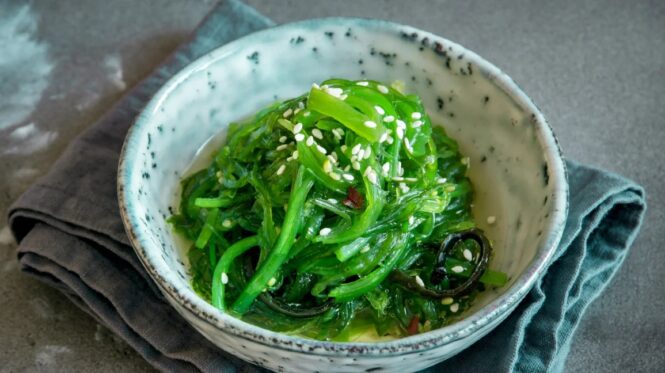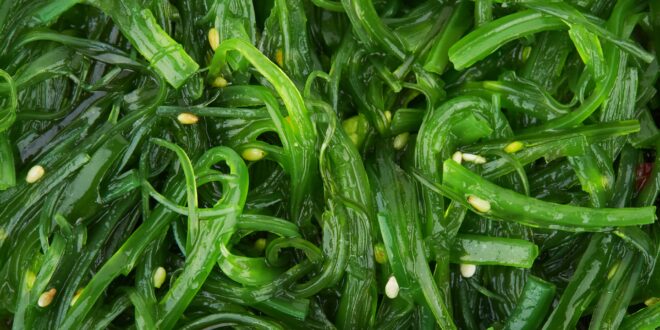Seaweed harvesting is a fascinating and sustainable practice that allows foragers to connect with the abundant resources of the ocean. Seaweeds, also known as marine macroalgae, offer a wide array of culinary, medicinal, and ecological benefits. From the traditional Japanese nori to the rising popularity of kelp in Western cuisine, seaweed is celebrated for its rich nutritional content and distinctive flavor.
In this article, we will explore the art of seaweed harvesting and provide you with valuable tips and tricks to ensure successful gatherings. From understanding the different types of seaweeds to mastering proper harvesting techniques, this guide will equip you with the knowledge to embark on a rewarding and responsible seaweed foraging adventure.
The Underwater Treasures: What is Seaweed Harvesting?

Seaweed harvesting involves gathering seaweed species from their natural habitats – oceans, seas, or rocky shorelines. This activity serves various purposes. It can be for personal consumption, as seaweed is recognized for its unique flavor and rich nutrients. Commercial production also heavily relies on seaweed harvesting, as seaweed is a versatile ingredient in food, cosmetics, fertilizers, and even biofuels.
Moreover, seaweed is subject to scientific research due to its carbon-absorbing abilities and its potential as a sustainable resource. The multifaceted benefits of seaweed – dietary, commercial, and environmental – are leading to an increased interest in seaweed foraging, making it not just a culinary adventure, but a significant contribution to sustainable practices.
Knowing Your Seaweeds: Understanding the Varieties
Before diving into seaweed harvesting, it is essential to familiarize yourself with the different types of seaweeds and their characteristics. Seaweeds are classified into three main groups based on color: red, brown, and green. Each group has unique features and uses.
1. Red Seaweeds: Examples include dulse, nori, and Irish moss. They are typically found in intertidal areas and have a delicate texture and mild flavor, making them ideal for various culinary applications.
2. Brown Seaweeds: Kelp, wakame, and kombu belong to this group. Brown seaweeds are rich in nutrients and often used in soups, salads, and as a seasoning. They thrive in colder, subtidal regions.
3. Green Seaweeds: Sea lettuce and sea grapes are common green seaweeds. They have a vibrant color and a mild taste, making them great garnish or additions to salads. Green seaweeds are commonly found in tidal pools and rocky shores.
Understanding the characteristics and habitats of different seaweeds will help you identify and select the right species for harvesting.
Tips and Tricks for Successful Seaweed Gatherings

Sustainable Harvesting Practices: Respect Nature’s Balance
Sustainable harvesting practices are crucial for maintaining the health and balance of coastal ecosystems. Here are some key principles to follow when harvesting seaweed:
1. Harvest Responsibly: Only gather seaweed that is abundant and easily accessible. Avoid overharvesting from a single area to ensure its regeneration and ecological stability.
2. Respect Wildlife and Habitats: Be mindful of the marine life that depends on seaweed for shelter and food. Don’t disturb nesting areas and breeding grounds. Take care not to damage other plants and organisms during your harvest.
3. Leave the Holdfast: The holdfast is the root-like structure that attaches seaweed to rocks or other substrates. When harvesting, avoid removing the entire seaweed plant, and instead cut a portion of the fronds or leaves, allowing the holdfast to regenerate new growth.
4. Use Sharp Scissors or Shears: Choose sharp scissors or shears designed for seaweed harvesting. This ensures clean cuts and minimizes damage to both the seaweed and surrounding habitat.
Timing is Key: Harvesting at the Right Moment
Timing is crucial when it comes to seaweed harvesting. Consider the following factors:
1. Tidal Cycles: Plan your harvest during low tides to access intertidal seaweeds more easily. Check tide charts for accurate information on low tide timings.
2. Seasonal Variation: Different seaweed species have peak growth periods. Research and understand the growth patterns of your target seaweeds to harvest when they are at their prime.
3. Quality Assessment: Look for seaweeds that are healthy, vibrant in color, and free from signs of decay or contamination. Avoid collecting seaweed that has washed ashore or is exposed to pollutants.
Proper Handling and Processing: Maintaining Quality and Freshness
To ensure the quality and freshness of your harvested seaweed, follow these guidelines:
1. Rinse Thoroughly: Rinse the seaweed with clean seawater or fresh water to remove any sand, debris, or salt.
2. Transport with Care: Use breathable mesh bags or containers to transport the seaweed. This allows air circulation and helps maintain freshness.
3. Store Correctly: If you are not using the seaweed immediately, refrigerate it in a perforated bag or container to retain its freshness for longer.
4. Process and Preserve: Seaweed can be consumed fresh, dried, or preserved in various forms. Experiment with different techniques such as drying, pickling, or fermenting to extend the shelf life and explore new culinary possibilities.
Recipes and Culinary Delights: Exploring the Flavors of Seaweed

Seaweeds offer a unique and diverse range of flavors that can enhance your culinary creations. Here are a few ideas to get you started:
1. Seaweed Salad: Combine different seaweed varieties, such as wakame, nori, and sea lettuce, with a light dressing for a refreshing and nutritious salad.
2. Seaweed Broth or Stock: Use dried seaweed, such as kombu or kelp, to make a flavorful base for soups, stews, or risottos.
3. Seaweed Seasoning: Grind dried seaweed into a fine powder to create a savory seasoning that adds depth of flavor to various dishes.
Summing Up
Seaweed harvesting is a captivating adventure that offers a myriad of benefits, from culinary delights to sustainable practices. By understanding the different types of seaweeds, practicing responsible harvesting techniques, and utilizing proper handling and processing methods, you can embark on successful seaweed foraging journeys.
Remember to respect nature’s balance, follow sustainable harvesting practices, and continue to learn and explore the diverse flavors and possibilities that seaweed has to offer. With these tips and tricks, you are well-equipped to dive into the world of seaweed harvesting and experience the wonders of this oceanic treasure.
 Imagup General Magazine 2024
Imagup General Magazine 2024



